Ann Hyde, Marketing Director, SOBA
Hey there fellow artists!
If you are an artist, copyright laws are like your superpower to safeguard your creative work from being misused or copied without your permission.
- First, let’s make it clear that copyright automatically applies to the work you create without the need for registration or any application. However, you may need to seek further copyright registrations if you need to defend your copyright in a court of law.
- Plagiarism is not only a legal question but also an ethical one.
- Ideas, concepts, or common styles are not protected, only the finished work itself.
- Copyright protects the specific expression of an idea but not the idea itself. For example, while a particular style of painting can be copyrighted, the general concept of using impressionism as an art style cannot be copyrighted.
Works not protected by Copyright. https://www.copyright.gov/circs/circ33.pdf
What is Copyright and how do the laws protect you? Here are five ways copyright laws protects your art:
- Exclusive Rights: Copyright grants you exclusive rights to your artwork. This means you’re the boss of your creation, and no one can reproduce, distribute, or display it without your say-so.
- Legal Proof: With copyright protection, your work is officially recognized as yours. If anyone tries to steal or copy it, you can show your copyright registration as legal proof that the art is indeed yours.
- Prevents Unauthorized Use: Copyright laws prevent others from using your work without your consent. So, if someone wants to use your art for commercial purposes or display it publicly, they need to ask for your permission first.
- Duration of Protection: Copyright safeguards your art for a specific period. Typically, it lasts for your lifetime plus an additional number of years, ensuring your art stays protected during your artistic journey.
- Control and Royalties: Copyright empowers you to control how your art is used. You can license it to others for specific purposes and charge royalties (fees) for its use, allowing you to earn from your creations.
Remember, copyright is your artistic armor, so make sure to properly claim and protect your work to enjoy its full benefits! Visit the US Government website for more information
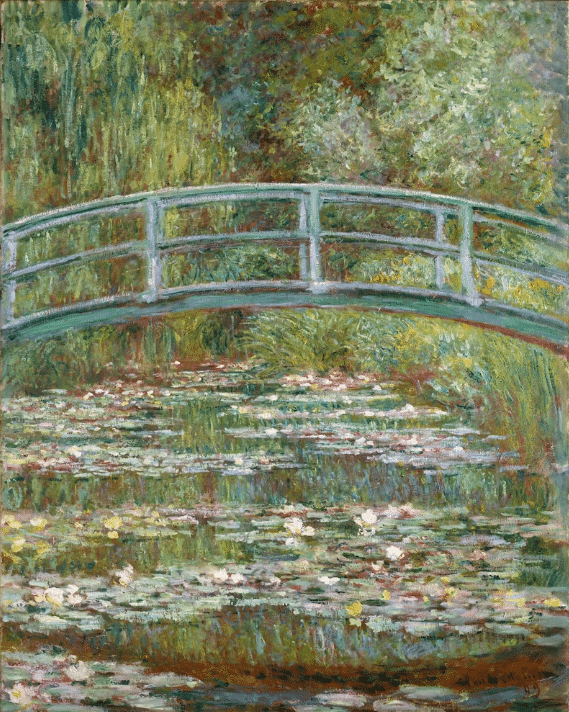
“The Bridge over a Pond of Water Lilies” by Claude Monet is part of The Metropolitan Museum of Art collection that was released into the public domain, making it and thousands of other art works available to anyone.
Public Domain
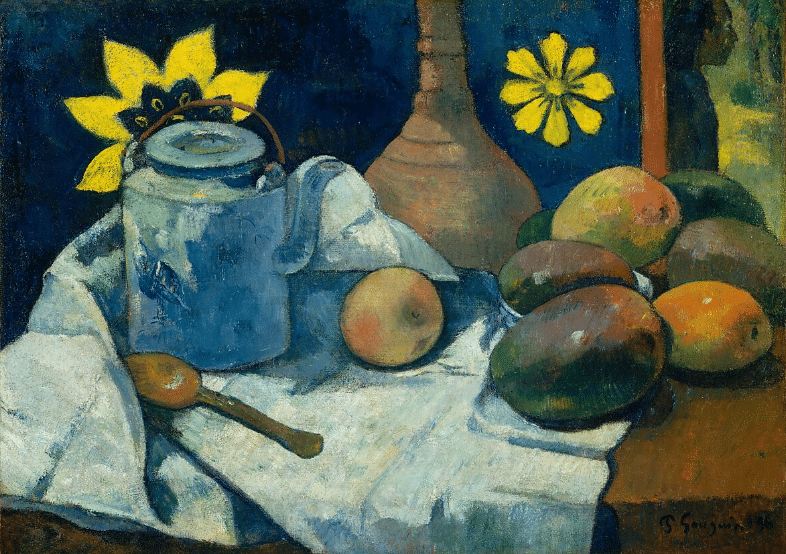
“Still Life with Fruit Dish” Paul Gauguin.
Public Domain
However, if you want to use someone else’s work here are the steps you need to take.
- Get Permission: Pick up your phone, send an email, contact the artist’s agents before using a copyrighted image, make sure to get a license or permission from the creator. You can do this by reaching out to the creator directly or using a third-party website that offers licensed images.
- Licensing: If you choose to license the image, look for reputable websites that offer copyrighted images for commercial or personal use. Ensure the license covers your intended purpose.
- Contact the Creator: If there’s no licensing option available, contact the creator to request permission to use their image. Make sure to clearly explain how and where you intend to use it.
- Transfer Copyright: In certain situations, copyright can be transferred from one person to another. This typically requires a signed document from the copyright holder or an authorized agent.
Remember, always respect copyright laws, and give credit to the original creators when using their work.
Legal Cases and Outcomes
Accordingly, you cannot claim copyright to another artist’s work, no matter how much you change it if the original creator can still recognize their work, unless you have the owner’s consent.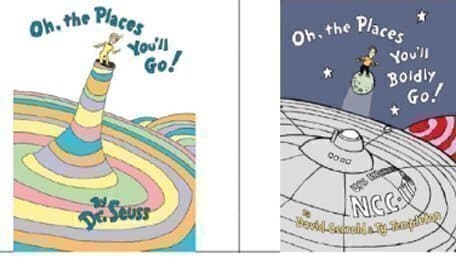
We’ve probably all read a Dr. Seuss book. Dr. Seuss Enterprises sued ComicMix LLC. It was about a parody of “Oh, the Places You’ll Go!” that used Star Trek characters instead of Dr. Seuss characters, following the same format as the original book. After a long legal battle, the two parties have now reached a settlement for the copyright infringement lawsuit. Parody
Another interesting infringement case pertaining to Fair Use was Viacom Int’l v. Pixi Universal: Painting/Drawing/Graphic; Parody/Satire
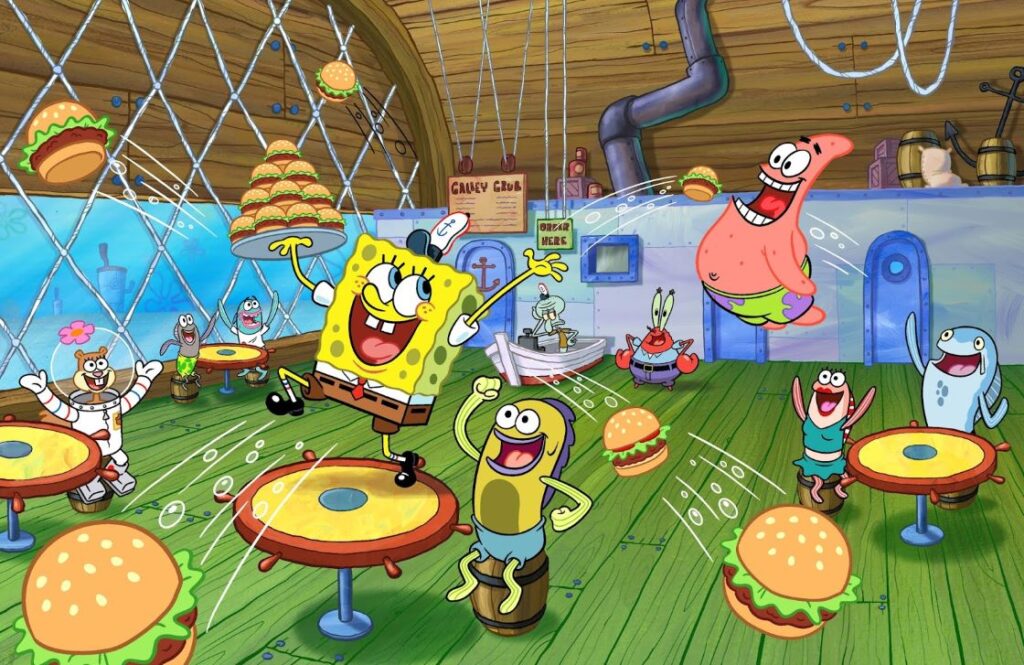
Viacom International, the company that owns the rights to “SpongeBob SquarePants,” filed a lawsuit against Pixi Universal, alleging copyright infringement. Pixi Universal had created a parody of the show, which they claimed fell under fair use, allowing them to use copyrighted material without permission.
The central argument in the case is whether Pixi Universal’s parody constitutes fair use or if it unlawfully copies and exploits copyrighted elements from “SpongeBob SquarePants” without permission from Viacom. Pixi Universal lost: Fair use not found.
Fair Use
Fair use in copyright law allows you to use someone else’s copyrighted work without their permission under certain circumstances. This means you can use parts of a copyrighted work for purposes like criticism, commentary, news reporting, education, or parody (but conditions apply) without facing legal consequences. For example, fair use applies to this article because it is for educational purposes.
Fair use is designed to balance the rights of copyright holders with the public’s right to access and use creative content for specific purposes. However, it’s important to note that the rules for fair use can be complex and depend on factors like the nature of the copyrighted work and the amount used. When in doubt, it’s always best to seek legal advice or obtain permission from the copyright holder.
Transformative Use
If you significantly alter the original work to create something new and original, it might be considered transformative use, which could be a defense against copyright infringement.
- Mashups and Remixes: Combining elements from multiple copyrighted works to create a new piece of art, music, or multimedia can be transformative if the resulting work significantly differs from the original sources.
- Visual Art Collage: Visual artists use collage techniques to create mashups by assembling various materials, such as photographs, magazine cutouts, fabrics, and other objects, into a single composition. The combination of these disparate elements forms a new visual narrative. Renowned artists like Pablo Picasso, Andy Warhol, and Marcel Duchamp have employed collage techniques in their works.
- Derivative works, if you use an artwork and make a sculpture, snow globe, puzzle, bas-relief, scarf, tee-shirt, mouse pad, wine label, clock, box, knife handle, button, lunch box, greeting card, poster, fabric, CD cover, figurine, frame, etc. you are infringing by creating an unauthorized derivative work.
Derivative works can be created with the permission of the copyright owner or from works in the public domain. In order to receive copyright protection, a derivative work must add a sufficient amount of change to the original work. This distinction varies based on the type of work.
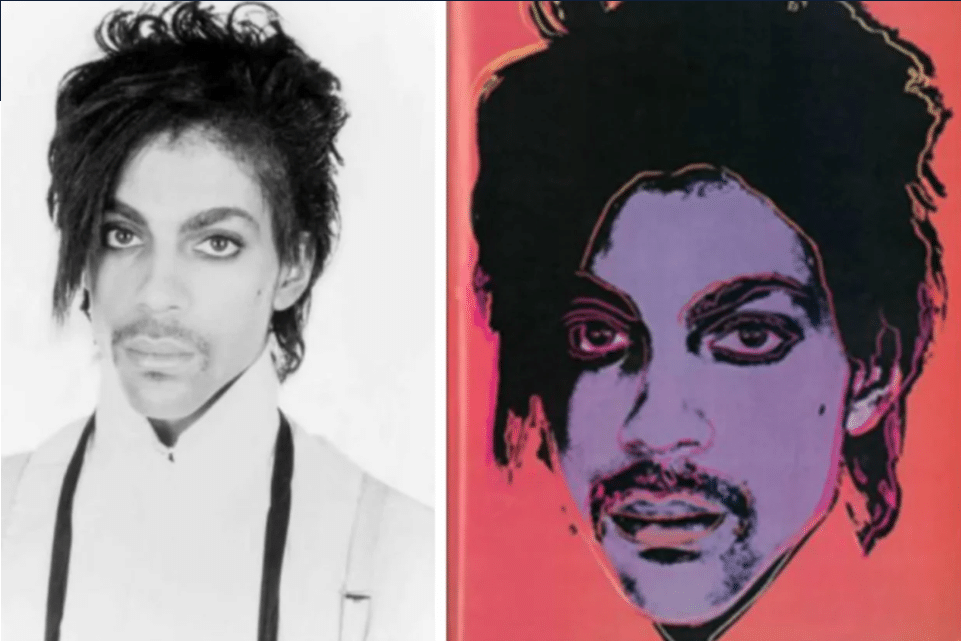
Andy Warhol Foundation v. Lynn Goldsmith (2021) lawsuit. This case involved photographer Lynn Goldsmith’s photograph of Prince and Andy Warhol’s use of the work to create a new image. The court ruled in favor of Goldsmith.
“Although we do not hold that the primary work must be ‘barely recognizable’ within the secondary work, … the secondary work’s transformative purpose and character must, at a bare minimum, comprise something more than the imposition of another artist’s style on the primary work such that the secondary work remains both recognizably deriving from, and retaining the essential elements of, its source material.”
This author explains these issues using the Andy Warhol Foundation v. Lynn Goldsmith (2021) lawsuit.
Visit https://kaineagary.com/2021/04/13/difference-derivative-v-transformative-work/.
Public Domain
To avoid copyright infringement, it’s best to create your artwork using your original content or materials that are in the public domain.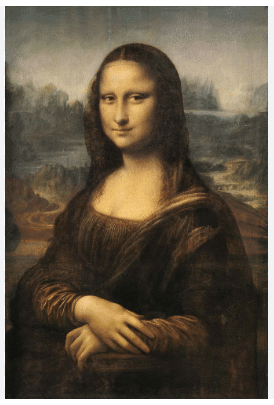
This means that art in the public domain, like “Mona Lisa” by Leonardo da Vinci, “Starry Night” by Vincent van Gogh, and photographs like “The Migrant Mother” by Dorothea Lange and even “Raising the Flag on Iwo Jima” – A famous photograph taken by Joe Rosenthal during World War II are not protected by intellectual property laws such as copyright, trademark, or patent laws.
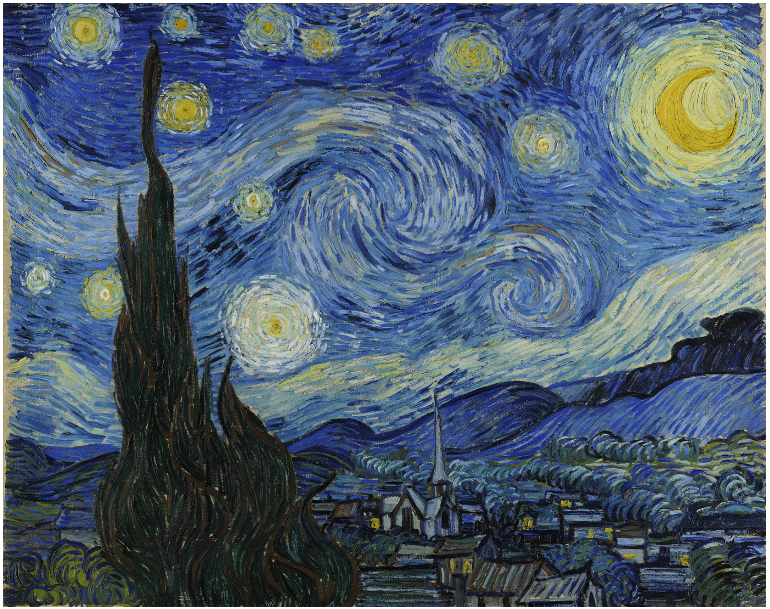
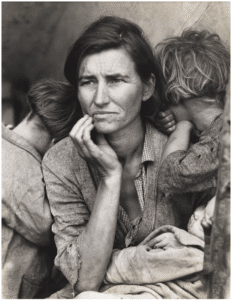
The public owns these works, not an individual author or artist. Anyone can use a public domain work without obtaining permission, but no one can ever own it or have licenses that allow for reuse.
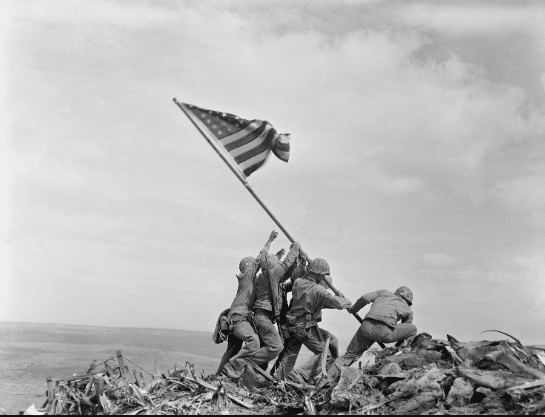
This copyright article provided by The Society of Bluffton Artists, SOBA Gallery is intended for informational purposes only and does not constitute legal advice. The content is designed to offer general guidance to artists at our gallery and should not be considered a substitute for professional legal counsel.

